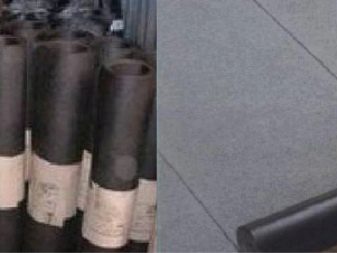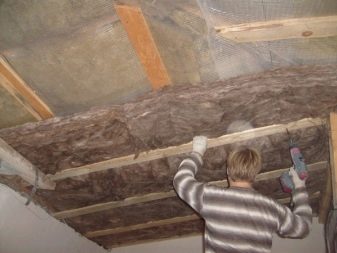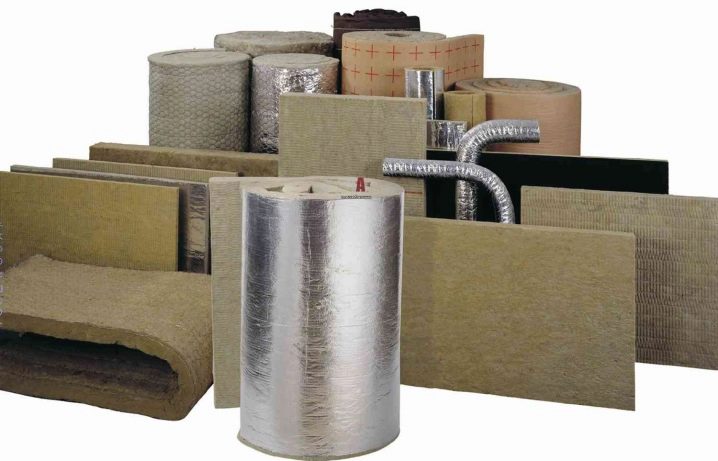The subtleties of insulation of the ceiling in a private house from the inside
Thermal insulation of the ceiling should be done in any private houses or apartments that are located on the upper floors. According to the laws of physics, warm air always rises, and cold air rushes down. If there are cracks in the ceiling, then the warm air masses will evaporate, the room will always be cold. In order “not to heat the street”, it is recommended to seriously address the issues of ceiling insulation.
Special features
It happens that there is no possibility in the apartment of a multi-storey building to warm the ceiling from the outside. The only option in this case is to carry out installation work indoors. To understand the characteristics of insulation in a private house from the inside should first consider the structure of insulation and the amount of work required. It is necessary to combine the following layers:
- external waterproofing;
- lathing for fixing insulation;
- heat insulation;
- finishing finish of the upper planes.
What to insulate?
To warm the room inside use several types of materials. Most often used a special insulating material, which is called glassine. It has the following advantages:
- cost effective;
- practical;
- resistant to temperature extremes;
- well resists moisture.
And also the heaters possessing similar characteristics are popular. These include such as:
- nenofol;
- polystyrene foam;
- izolon;
- penoplex;
- technical cotton wool;
- bung.
As a waterproofing, PVC film is most often used, which reliably protects against leakage. Its service life is several decades. The film is profitable to use, because it is inexpensive.
PVC film should be overlapped, this is done so that condensate does not penetrate the surface of the supporting structures. The inner layer of waterproofing is glued, the seams are sealed with tape, they must be sealed.
Drywall
Drywall is good in that it provides a perfectly flat, seamless surface,with it you can make any kind of ceiling. Two types of battens are used to work with plasterboard, such as:
- from wood - it is simpler to work with such material, it costs less;
- galvanized profile - is more durable, does not deteriorate under the influence of temperature difference, is not defeated by the action of mold or fungus.
Technical wool
Warming the ceiling in a private household using technical wool is performed in the following way:
- using a stapler, a PVC film is mounted to the ceiling, which will reliably protect against moisture ingress on the plates;
- the crate is packed from wooden bars with a step of 40–50 cm. The size of the bar should correspond to the thickness of the heat plates, that is, have 5 cm;
- slabs of technical wool are laid, they are mounted with special mounting rails. This design is reliable and simple, not subject to deformation.
Mineral wool has several important characteristics.
- Low thermal conductivity - 0.036 W / (m * K); a layer of no more than 10 cm is enough for insulation, which corresponds to the usual thickness of the supporting beams.
- The material has a high vapor permeability, 50 kg of weight per cubic meter coefficient is 0.7 mg / (m * h * Pa). This indicator is higher than that of wood.
- Slight hygroscopicity, that is, when in contact with a liquid, the material will absorb no more than 2% moisture from the total volume.
- Minvaty plates have high fire safety. Such insulation does not ignite, does not contribute to the spread of fire.
- Minwat has good sound insulation characteristics, is able to effectively delay sound waves of the most different frequencies. It is especially beneficial to use basalt insulation, because it is not deformed, has a long service life. One package is enough for processing about twenty square meters.
- The material is not susceptible to the detrimental effects of fungus or mold, it has antiseptic properties.
- A porous material that has a specific low weight cannot be burdensome for supporting structures, which contributes to a long service life.
Condensate adversely affects technical wool, it inevitably loses its useful properties. PVC plates are not afraid of moisture, not defeated by erosion or spread of the fungus. The advantages of mineral wool is that it is not afraid of moisture, it does not dampen. Minvat is cheaper than PVC plates, does not contain toxins, foam plates emit harmful components.
It is worth remembering that when working with mineral wool, it is imperative to use gloves and glasses to prevent microparticles from falling into the eyes or on the skin of the hands.
Performance of work
The easiest to install from the inside of the room is basalt insulation. It is dense and easy to handle. In order to secure it does not require special equipment or any special mechanisms. Plywood is suitable for filing interfloor beams. This material is well hemmed bearing structures, which are mounted on the bottom. They can support plates of insulation that are placed between the beams.
Most often used plywood with a thickness of 1 cm, so it is the most popular brand of FC. There are often cases when plywood is also used. It is less "fonit" formaldehyde. In addition to plywood, also use materials such as gypsum board, KVL and clapboard. Plywood is mounted as follows:
- the sheet is cut to the required size;
- a gap of about 2-3 mm is left between the wall and the plywood;
- with the help of screws, the prepared elements are fastened;
- The distance between the screws is approximately 15–25 cm.
And also constantly use polyurethane glue sold in large cylinders. This material is good because when used correctly it does not require the use of expensive mounting foam. This material is well sealed joints in insulation, for example, in the attic. If the room in the attic is residential, then you will need to use a rabbeted board. If the room has a technical purpose, then it is better to use plywood.
A special primer for wood must be present on a mandatory basis, as it beams, overlappings and lathing are worked through. Special primer reliably protects wooden structures from the action of microorganisms and harmful insects.
To fix the communication on the ceiling, use a plastic or wooden box. Such work is easy to do with your own hands. In recent years, foam PVC cylinders have also been increasingly used. Sometimes the box is also covered with mineral wool, which reduces the level of fire hazard, this creates additional noise insulation.
It is recommended to make small gaps of about 2–4 mm between the individual bars.They are necessary for the tree to "breathe." If the bars closely adjoin each other, then the appearance of deformation is inevitable.
Installation of insulation in the attic is carried out in such a way as:
- harvested thermal plates of technical cotton wool are laid on a horizontal surface, which is laid with a waterproofing film;
- for the plates to fall into place, they must be prepared in advance;
- The task of fitting heat plates is important, since the gap between the material should be minimal;
- Often the space between the plates is filled with mounting foam, which guarantees the absence of “cold bridges”.
The main materials used by homeowners for insulation are the following:
- glass wool;
- basalt slabs;
- kamnevate;
- polypropylene in rolls;
- foam plates;
- polyplex;
- polystyrene;
- expanded clay.
And also often used the so-called opil. These are wooden chips that are mixed with lime, cement mix or clay. This process is laborious, requiring a fair amount of time. Therefore, it is resorted to only in caseswhen a large amount of such wood waste is present.
The most popular are PVC plates. They can be successfully used both inside and outside. The gable roof is insulated primarily from the inside, as well as massive bearing beams are processed, in the cold season they can be a significant source of cold.
If the house is single-storey, you should definitely think about how to warm the basement and the veranda, since they can generate cold air in winter.
Useful recommendations
Experts recommend sticking to the following helpful tips when insulating the ceiling in a private house from the inside:
- in the attic it is often necessary to mount a crate that creates the space between the floor and the floor. Nodes from the tree must be treated with an antiseptic primer;
- all concrete and wood floors of the upper floor must be carefully insulated with a film that is mounted according to the “overlap” principle;
- free areas are filled with expanded clay or laid with PVC panels;
- The heat loss of a wooden ceiling sometimes reaches 4 W / m² / K.Wood has good thermal conductivity; for brick or reinforced concrete, the indicator is much higher;
- to warm the ceiling, if there are warm rooms at the top, it makes no sense;
- in the hot season, insulation plays the role of an insulator, which protects the room from heating;
- at the beginning of the design of the work it is best to determine where the insulation will be located - from the inside or outside;
The prefix "eco" in the name of the heater is an indicator of its environmental safety. For example, ecowool is a safe product that consists mainly of cellulose and natural additives. Very good material is foam glass due to optimal thermal conductivity, high strength and durability. The material does not burn and is not afraid of high temperatures. Foam glass often poured interfloor overlap. Expanded clay is noticeably inferior in quality to PVC or mineral wool.
How to warm the ceiling in a private house, see the following video.
























































